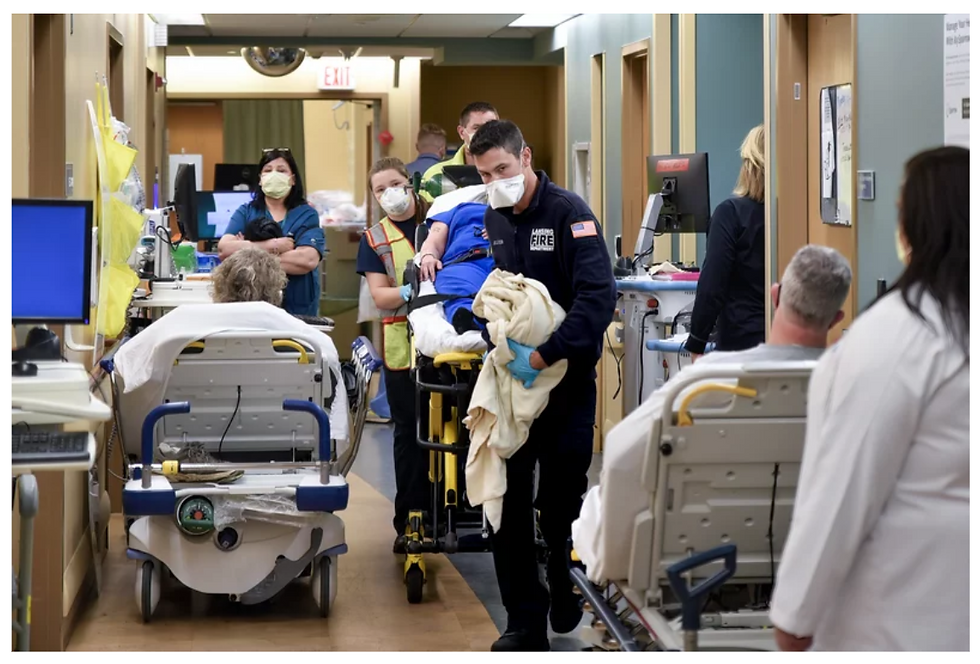How to Keep Wound Patients Out of the Hospital
- Joe Ebberwein

- Sep 27, 2016
- 3 min read
Updated: Mar 30, 2021

Healthcare is experiencing a dramatic shift in the way providers are reimbursed for their care. Whether you agree or not with the fundamental principles of value-based care, payers (including commercial insurance, self-funded employers, Medicare and Medicaid) are changing the way they pay for the care of their members - a volume-centric approach is shifting to outcome-based care.
The focus started on the care in the hospital, where some of the highest costs are generated. If patients with multiple chronic conditions can be managed without frequent unnecessary ER visits and hospitalizations, the overall spend per patient will naturally decrease.
Gradually, the Centers for Medicare and Medicaid Services (CMS) have begun penalizing hospitals for readmissions for certain targeted conditions within the first 30 days after discharge. You might ask, “How can a hospital control what happens to a patient when they leave the four walls of the facility?” What they are able to control is the care transition process from one level to the next, whether it be to a skilled nursing facility, to home care, or to self-management. As new payment models such as bundles continue to proliferate, the impetus will be to influence care for 90 days post-discharge. Care transitions and care coordination efforts become paramount.
In the case of wound care, 30-day readmissions occur as follows:
29.1% for ileostomy and other enterostomy
24% for nephrostomy
23% of patients who have had a lower extremity amputation
19% debridement of a wound, infection, or burn
19% for a colostomy
The rate of hospitalization for patients with Diabetes Foot Ulcers (DFUs) range from 9-20% and accounts for 74-84% of the total costs associated with DFUs. The overall average cost of treating a pressure ulcer is $10,700.
[INFOGRAPHIC] The most important stats in modern wound care
Ways to Keep Patients out of the Hospital
Care Transitions
A highly effective care transitions program ensures that patients discharged from the hospital to the next care setting receive continued, consistent care and reinforced education regarding their condition. The care team (which can sometimes be the patient along with a caregiver) knows the plan of care and is ready to deliver care for the patient with the level of expertise required. A certified wound care nurse ensures that the patient receives evidence based treatments by specific wound type.
Education is key to a successful care transitions plan. For example, a person with a new ileostomy may need additional support after the stress of being in the hospital. A telehealth wound care nurse can monitor their progress for fluid intake and appliance use as well as the healing of the stoma wound through telehealth or a mobile wound app. Unmanaged, the patient’s health status may decline rapidly due to dehydration, leading to a return to the hospital.
Prevention
In the case of diabetes related foot ulcers, patient engagement and prevention techniques are critical to avoidance of the wound . This can include monitoring the dermal temperatures of the surface of the foot for changes in temperature indicative of inflammation. Readings can be recorded in a mobile app, and wound-certified clinicians can intervene with certain preventative measures (offloading shoes, for example) to avoid ulceration.
Pressure ulcers can be prevented at home or in a facility with correct prevention surfaces, proper positioning and frequent turning of the patient, continence management, and transferring techniques to avoid shearing or other injury. Proper offloading can also prevent pressure injuries in patients who may have comorbidities or whose health is compromised by their nutritional status. Existing wounds must be managed and treated to avoid infection, which can lead to complications requiring hospitalization.
A certified wound care clinician is a valuable resource for education of both prevention measures as well as the evidence-based best treatment protocols for wound healing. Prevention, along with managing an existing wound can prevent unnecessary and costly admissions and readmissions to the hospital, as well as reduce cost and pain and suffering for the patient.
A Better Model
Care transitions and coordination through telehealth and mobile apps are embedded in the care delivery model of CORSTRATA . CORSTRATA uses board certified wound care clinicians to increase access to expert wound care across various provider settings. In skilled nursing facilities, the value lies in prevention of facility acquired pressure ulcers and faster healing times. In home health and hospice, the return on investment results from reduction in RN visits due to less frequent dressing changes, enhanced wound care supply formulary, access to a wound certified nurse without the commitment to an expensive FTE, and overall increased risk management. CORSTRATA uses HIPAA compliant mobile technologies for both photo documentation of the wound and initiation of live video consults.





Comments